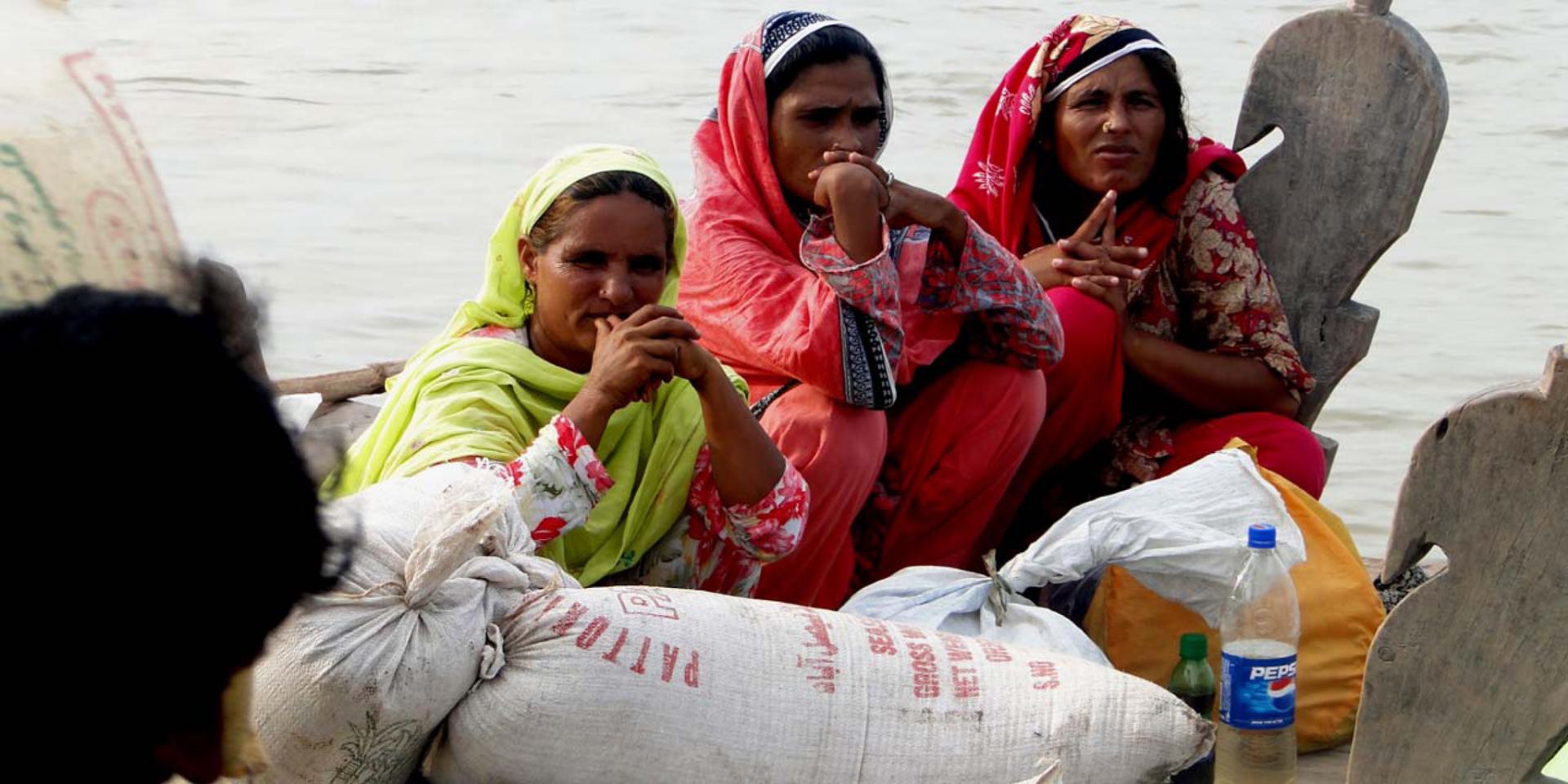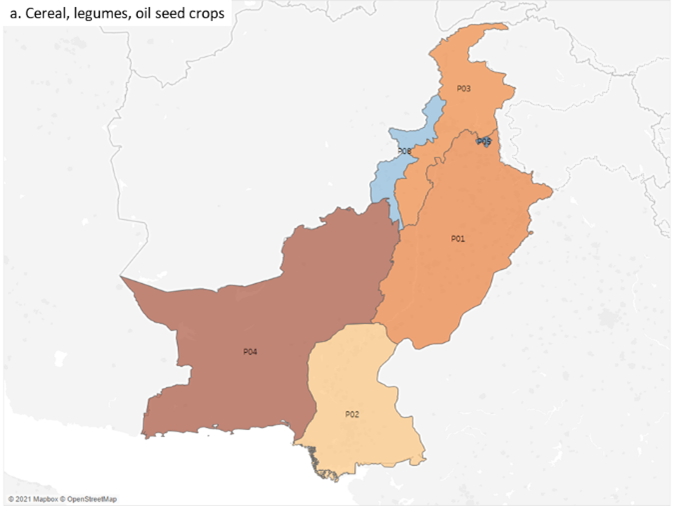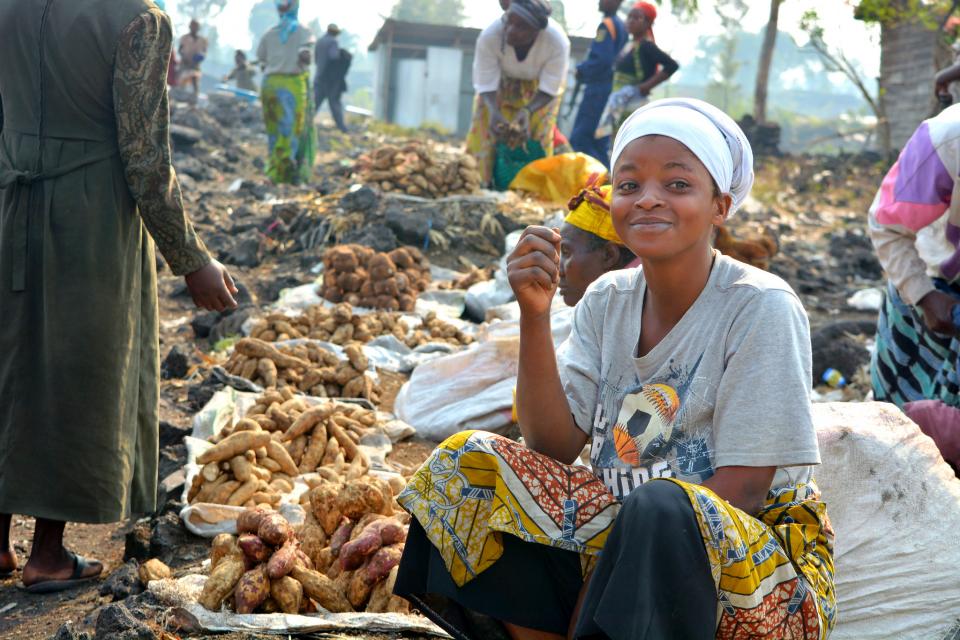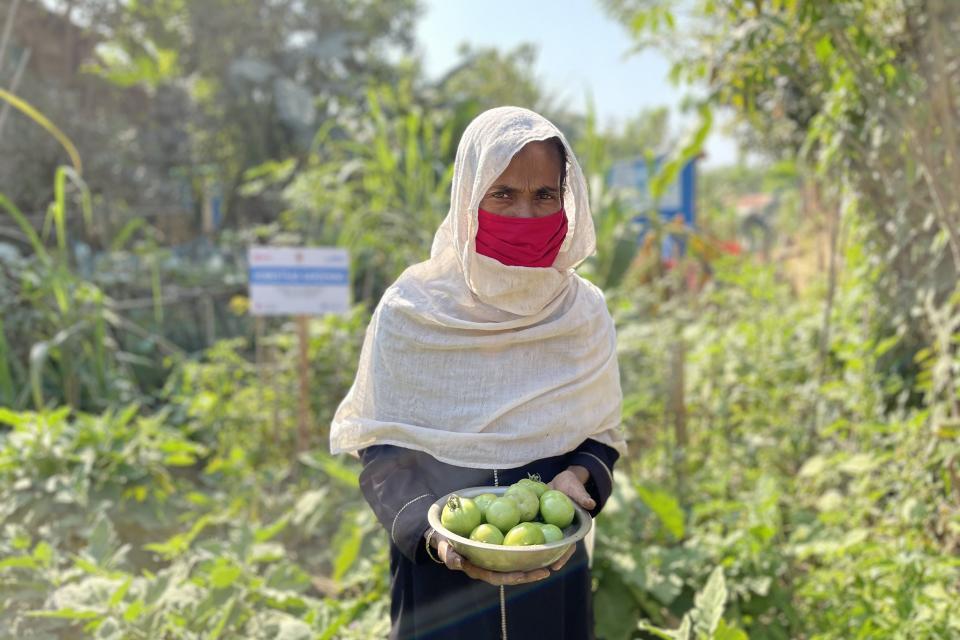Rural women in Pakistan are the most affected by ‘apocalyptic’ floods
 Photo: United Nations Development Programme/Flickr
Photo: United Nations Development Programme/Flickr
A combination of climate hazards, constraining gender norms and high dependence on agriculture means that women farmers are especially hard hit by current floods in Pakistan. Aid and interventions must target women to improve households’ resilience to future disasters.
Pakistan is in the midst of a natural and humanitarian disaster after ‘apocalyptic’ flash floods have ravaged one-third of the country. The toll currently stands at more than 1400 lives, and the extent of devastation is staggering. Balochistan and Sindh are the worst affected provinces, with Punjab coming very close, and millions of lives have been affected and numerous assets lost.
The country may be staring at food insecurity and further income losses due to massive damage to crops, especially cotton and rice, in the affected provinces. It will take months for the flood waters to recede, and this will likely result in a delay in wheat sowing, which will further hamper food production. This may result in price hikes and increased import bills. We must act now to support women farmers in the areas most affected by flooding.
Women pay the highest price
Pakistan has been identified as one of the nations most vulnerable to climate change. Agriculture, the sector that contributes approximately 23 percent of the GDP, remains particularly exposed to extreme weather events and their aftermath.
The sector is the largest employer of Pakistani women, with nearly 7.2 million women working in agriculture. But their work remains largely informal, unrecognised, unpaid and underpaid. Widespread gender inequality and rigid gender norms exacerbate their vulnerability to climate risks.
The floods of 2010 are a testament to this inequality. At that time, 49 percent of the 1.5 million people internally displaced in the province of Sindh were women. The maternal mortality rate was as high as 381 per 100,000 live births in the flood-affected areas.
Today, women remain subject to the greatest risk. A recent ranking of 87 low- and middle-income countries on a climate-agriculture-gender inequality hotspot index, developed by CGIAR researchers, shows Pakistan ranking number one in Asia. These hotspots are defined as areas where climate hazards, women’s exposure to climate hazards because of their involvement in agriculture, and women’s vulnerability due to prevailing gender inequalities intersect.
What’s more, a province-level analysis highlighted Balochistan, Punjab and Sindh as hotspots within the country. Women farmers in these provinces engage heavily in rice and oil seed production, and are often solely responsible for weeding, seed cleaning and storing of crops as well as for dairy farming. This puts them at risk of suffering under current floods and future climate disasters.

Map: This crop-specific climate–agriculture–gender inequality hotspot maps at the subnational level in Pakistan shows Balochistan scoring very high, and Punjab and Khyber Pakhtunkhwa scoring high for women involved in cereal, legumes or oil seed crops.
Legend: dark blue is relatively low hotspot score; dark orange is high hotspot score. Names of the regions are P01: Punjab; P02: Sindh; P03: Khyber Pakhtunkhwa (NW Frontier); P04: Balochistan; P05: Islamabad (ICT); P06: Gilgit Baltistan; P07: AJK; P08: FATA.
Limited access to land, loans and learning
In addition to their high dependence on agriculture, women in these three provinces are more vulnerable because of significant gender inequalities, driven by constraining social norms.
Even though women are extensively involved in agriculture, they have very limited access to land. A 2018 demographic and health survey data revealed that 99.5 percent of women in rural Balochistan, 96.7 percent in rural Punjab and 98.7 percent in rural Sindh did not own land.
During a disaster, women farmers are not compensated for crop losses as they do not own the land they toil on. In the wake of the 2010 floods, the government of Pakistan devised a crop insurance scheme that could only be availed by farmers who owned up to 25 acres of land. This meant that women stood to gain nothing from this relief measure.
Women farmers’ ability to cope with floods and other climate shocks also hinges on their access to credit, knowledge and skills. Only 5.3 percent, 1.6 percent and 0.9 percent of rural women in Punjab, Sindh and Balochistan, respectively, own and use a bank account, and they hardly get loans from formal channels as they have barely any land to offer as collateral.
Finally, social norms dictate for Pakistani women to be homebound and fulfil household responsibilities. They have limited time and opportunities to acquire new knowledge and skills that could help them cope in crises. A 2018 report highlighted that a lack of training opportunities prevent the country’s rural women from adding value to agricultural products and services, limiting their earning opportunities.
In sum, these factors – lack of access to land, loans and learning – result in women having limited resources to cope with and recover from climate disasters.
Aid and interventions must target women
In the current scenario, this means that women farmers in Pakistan are extremely vulnerable to the adverse aftereffects of the ongoing floods. There is an urgent need to design targeted aid and interventions to support women farmers in the three provinces – Balochistan, Punjab and Sindh – to enable them to deal with the aftermath of this crisis.
Strategic investments should be urgently made in interventions that combine climate risk management and adaptation actions with efforts to improve women’s access to assets, technology, knowledge and credit. Only then will women be able to adapt to climate change impacts and households able to strengthen their resilience to future disasters.
The hotspot mapping provides a very useful and robust basis to target investments in places where women are at most risk due to climate change. This will generate bigger returns to investments made and also ensure that inequalities do not become worse.


